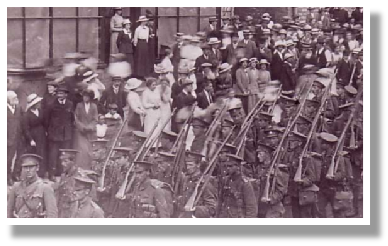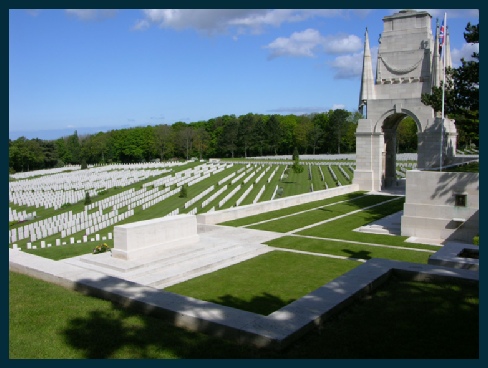Copyright © All rights reserved.



David Stephenson
Born in the third quarter of 1895 and registered in Malton, David Stephenson was the third son of George and Annie Elizabeth (nee Rookes) Stephenson who were married in the Malton area in the last quarter of 1891.
In 1901 the Stephenson family were living in Broughton though to judge by the places of birth of the children they had only lived there for a year or so.
1901 census – resident in Main Street, Broughton
STEPHENSON, George, Head, Married, M, 33, Brickyard Labourer, Terrington Yorkshire,
STEPHENSON, Annie E, Wife, Married, F, 29, , Old Malton Yorkshire,
STEPHENSON, George, Son, Single, M, 10, , Old Malton Yorkshire,
STEPHENSON, John, Son, Single, M, 8, , Old Malton Yorkshire,
STEPHENSON, Margaret, Daughter, Single, F, 7, , Helfield Yorkshire,
STEPHENSON, David, Son, Single, M, 5, , Old Malton Yorkshire,
STEPHENSON, Elsie M, Daughter, Single, F, 3, , Old Malton Yorkshire,
STEPHENSON, Nellie, Daughter, Single, F, 0 (11 MOS), , Broughton Yorkshire,
By 1911 they had moved back to Old Malton and were living on Westgate and David and his father were both working in a brickyard, presumably that of Thomas Brand near the Station in Norton.
1911 census – resident at 40 Westgate, Old Malton
STEPHENSON, George, Head, Married, M, 44, Labourer in brickyard, Terrington York,
STEPHENSON, Annie Elizabeth, Wife, Married 20 years, F, 39, , Old Malton Malton,
STEPHENSON, John William, Son, Single, M, 18, Hairdresser, Old Malton Malton,
STEPHENSON, Margaret Jane, Daughter, Single, F, 17, General Servant, Kelfield Selby,
STEPHENSON, David, Son, Single, M, 15, Waggoner for brickyard, Old Malton Malton,
STEPHENSON, Elsie Mary, Daughter, , F, 13, School, Old Malton Malton,
STEPHENSON, Ellen, Daughter, , F, 10, School, Broughton Malton,
STEPHENSON, Harry, Son, , M, 9, School, Broughton Malton,
STEPHENSON, Annie Elizabeth, Daughter, , F, 5, , Old Malton Malton,
STEPHENSON, Gertrude May, Daughter, , F, 7 months, , Old Malton Malton,
As so many local lads did, David had enlisted at Malton in the 5th Battalion of the Yorkshire Regiment, and is recorded as one of the first group of Territorials to leave Malton at the outbreak of war. This was a Territorial battalion based at Scarborough and was part of the York & Durham Brigade, Northumbrian Division. In 1915 the Battalion landed at Boulogne and became part of 150th Brigade, 50th (Northumbrian) Division.
In early April the Division was warned that it would go on overseas service and entrainment began on 16 April. By 23 April the Division had concentrated in the area of Steenvoorde. It had arrived just as the German army had attacked at nearby Ypres, using poison gas for the first time, and was rushed into the battle. The Division then remained in France and Flanders and took part in the Second Battle of Ypres.
In February 1916 the 5th were in trenches in the Ypres Salient until 12th February when they were relieved by 4th East Yorkshires and went into close support. Through the Spring of 1916 they continued to alternate between trenches and support sustaining a constant stream of casualties and losses, first around Ypres and then at Kemmel.
In August, the 5th Battalion was marched to the Somme area and after a few weeks of rest and training left Millencourt on 5th September for the Trenches in front of Bazentin Le Petit. The 15th and 16th of September saw terrible losses with about 50 dead, 170 wounded and another 30 unaccounted for. After the carnage of September, the Battalion moved into billets in October to re-
However David had clearly been wounded during the action at Bazentin le Petit and died of wounds in hospital at Etaples on 20th October 1916 and is buried in the Military Cemetery there.
During the First World War, the area around Etaples was the scene of immense concentrations of Commonwealth reinforcement camps and hospitals. It was remote from attack, except from aircraft, and accessible by railway from both the northern or the southern battlefields. In 1917, 100,000 troops were camped among the sand dunes and the hospitals, which included eleven general, one stationary, four Red Cross hospitals and a convalescent depot, could deal with 22,000 wounded or sick. In September 1919, ten months after the Armistice, three hospitals and the Q.M.A.A.C. convalescent depot remained. The cemetery contains 10,771 Commonwealth burials of the First World War, the earliest dating from May 1915. 35 of these burials are unidentified.

